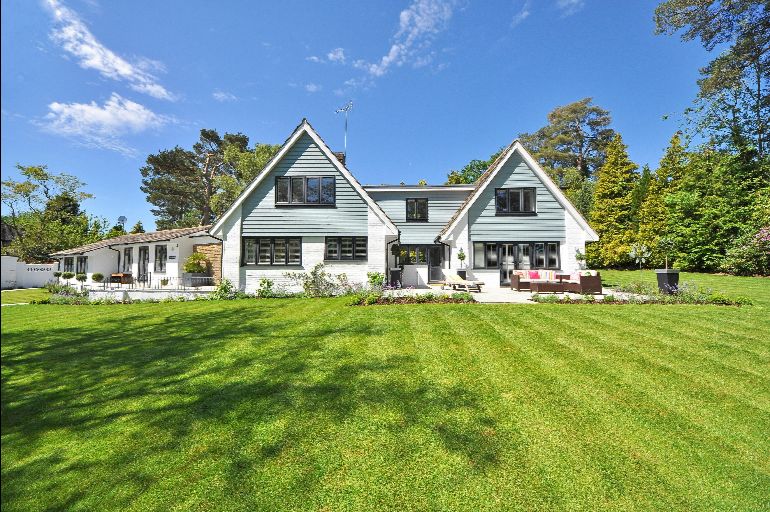Building a new home is an exciting journey — but it can quickly become stressful if you don’t understand the true costs involved. From materials and labor to permits and finishes, every detail affects the final price.
That’s why knowing how to estimate new home construction costs is essential before breaking ground. An accurate cost estimate helps you set a realistic budget, avoid surprises, and make informed design decisions.
This guide explains everything you need to know — including cost factors, estimating steps, and expert strategies — so you can plan your home project with confidence and financial clarity.
What Does “Estimating New Home Construction Costs” Mean?
Estimating new home construction costs is the process of calculating how much money it will take to build a new house from start to finish.
This includes the direct construction costs (like labor, materials, and equipment) and indirect costs (such as permits, design fees, utilities, and contingencies).
Essentially, it’s about answering one simple question:
“How much will it cost to build the home I want — where I want — and to the quality I expect?”
Accurate estimates help homeowners, builders, and lenders understand project feasibility, secure financing, and manage expectations before the first brick is laid.
Why Estimating Home Construction Costs is So Important
Whether you’re building a modest family home or a luxury residence, estimating costs serves several critical purposes:
1. Budget Planning
It helps you set a realistic budget that aligns with your financial capacity and lifestyle goals.
2. Design and Scope Decisions
With clear cost insights, you can make informed choices about home size, materials, and finishes — before construction begins.
3. Preventing Cost Overruns
Accurate estimates help avoid unpleasant financial surprises mid-project.
4. Financing and Loan Approval
Banks and lenders often require detailed cost breakdowns before approving construction loans.
5. Transparent Communication
A detailed cost estimate fosters better collaboration between homeowners, architects, and contractors.
Main Factors That Influence New Home Construction Costs
Every home build is unique, but several core factors influence the total cost.
1. Location
Construction costs vary widely depending on local labor rates, material availability, and regulations. Urban areas often cost more than rural ones.
2. Size and Layout
Larger homes require more materials, labor, and time. Complex layouts, multi-story structures, or custom designs also increase costs.
3. Design Complexity
A modern minimalist home costs differently than a traditional one with ornate details. Architectural complexity drives both material and labor costs.
4. Material Quality
Choosing premium flooring, high-end fixtures, or energy-efficient windows will raise your budget. However, they can also add long-term value.
5. Labor Costs
Labor rates depend on the skill level required and regional wages. Specialized trades like electricians or masons typically cost more.
6. Permits and Fees
Local building permits, inspection fees, and impact charges can add thousands to your total cost.
7. Site Conditions
Challenging soil, sloped lots, or remote locations can require extra excavation, foundation work, or transportation fees.
8. Contingencies and Unexpected Issues
Always account for unexpected challenges like weather delays, material shortages, or last-minute design changes.
Average Cost to Build a New Home (2025 Estimates)
While costs vary by region, here’s a general idea of average new home construction costs in 2025:
| Home Type | Approx. Cost (per sq. ft.) | Estimated Total Cost (2,000 sq. ft.) |
|---|---|---|
| Basic / Budget Build | $120 – $160 | $240,000 – $320,000 |
| Mid-Range Custom Home | $170 – $250 | $340,000 – $500,000 |
| High-End / Luxury Home | $300 – $500+ | $600,000 – $1,000,000+ |
These figures include materials, labor, and standard finishes but exclude land purchase and major customizations.
How to Estimate New Home Construction Costs
Step 1: Define the Project Scope
Start by clearly defining your home’s size, design, and desired quality level. The clearer the vision, the more accurate your estimate.
Step 2: Prepare the Design and Floor Plans
Work with an architect or designer to develop preliminary drawings. This helps identify materials, structure types, and finishes early on.
Step 3: Perform a Quantity Takeoff
A quantity takeoff involves measuring every material needed — such as concrete, lumber, bricks, roofing, paint, and fixtures.
You can use digital takeoff tools like PlanSwift, Bluebeam Revu, or STACK for accuracy.
Step 4: Apply Unit Costs
Multiply material quantities by their current unit prices (e.g., cost per cubic yard of concrete or per linear foot of lumber).
Use up-to-date data from suppliers or cost databases like RSMeans.
Step 5: Include Labor Costs
Calculate total labor hours and multiply by local labor rates. Skilled trades like electricians, plumbers, and masons usually have higher rates.
Step 6: Add Indirect Costs
Include fees for permits, utilities, equipment rentals, project management, insurance, and supervision.
Step 7: Include Contingency and Profit
Add a contingency (typically 5–10%) to cover unexpected costs and a profit margin if you’re working with a builder.
Step 8: Review and Validate
Cross-check your estimate with similar recent projects or professional estimators to ensure accuracy and market alignment.
Estimating Software and Tools
Digital estimating software improves accuracy, efficiency, and collaboration. Top tools include:
-
PlanSwift – For material takeoffs and cost breakdowns.
-
Bluebeam Revu – Excellent for plan markups and area measurements.
-
CostX – Ideal for BIM-based estimating.
-
STACK – Cloud-based platform for team collaboration.
-
RSMeans Data Online – Provides updated national and regional construction cost data.
These tools help eliminate human error, save time, and streamline the entire budgeting process.
Expert Tips for Accurate Home Cost Estimating
-
Research Local Prices: Always use local cost data instead of national averages.
-
Get Multiple Bids: Compare quotes from multiple subcontractors for the best value.
-
Factor in Inflation: Material prices can change during long projects—add escalation allowances.
-
Don’t Forget Land Prep: Site clearing, grading, and utilities can significantly affect your budget.
-
Plan for Future Upgrades: Add flexibility for potential smart home or energy-efficient system installations.
-
Hire a Professional Estimator: They bring experience, market data, and accuracy that self-estimating often lacks.
Common Mistakes to Avoid
-
Ignoring soft costs like design fees or landscaping.
-
Underestimating labor productivity.
-
Skipping contingencies or escalation factors.
-
Using outdated price data.
-
Overlooking permit or inspection fees.
Avoiding these errors ensures your project stays within budget — and stress-free.
Benefits of Hiring Professional Estimating Services
Professional construction estimators use advanced software and industry data to provide precise, itemized cost breakdowns.
Benefits include:
-
Time savings and improved accuracy.
-
Transparent cost control.
-
Risk reduction through data-backed insights.
-
Better budgeting for loans and bids.
Whether you’re building in New York City, Houston, or Los Angeles, expert estimating services can help make your home project more predictable and profitable.
Conclusion
Estimating new home construction costs isn’t just about adding numbers — it’s about creating a financial roadmap for your dream home.
By understanding cost factors, using proven estimating methods, and leveraging technology, you can make smarter choices and avoid budget pitfalls.


